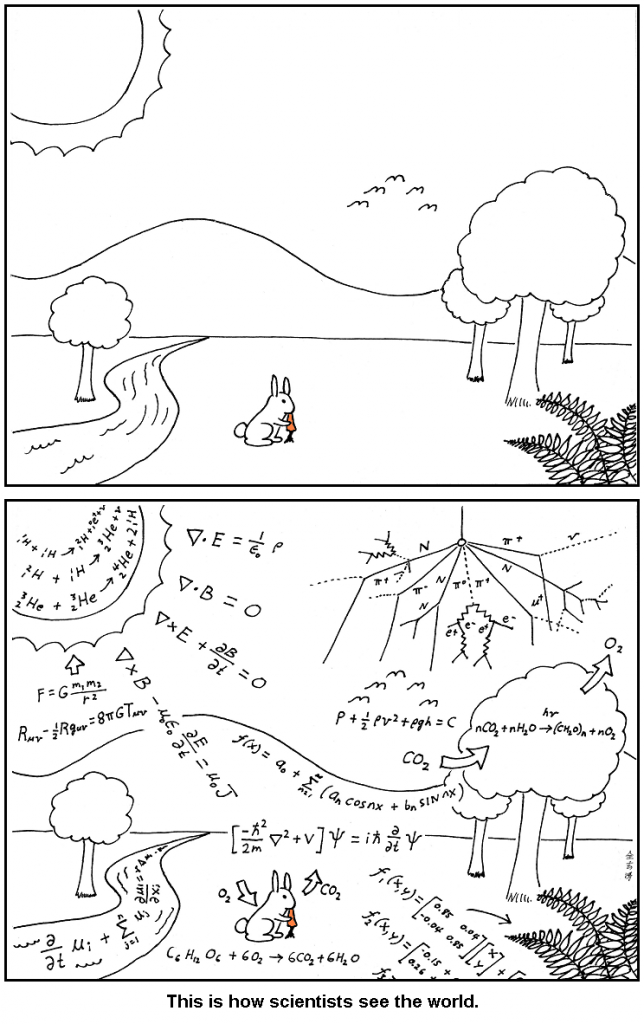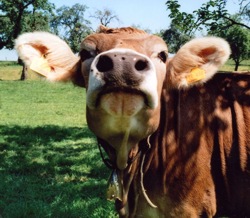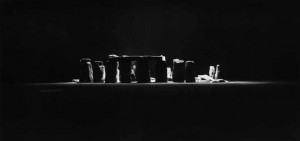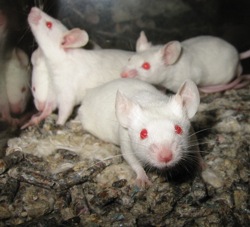 Abstruse Goose is a nameless, faceless entity, obviously a mathematician of some sort, who posts extremely funny but occasionally abstruse cartoons at http://abstrusegoose.com.
Abstruse Goose is a nameless, faceless entity, obviously a mathematician of some sort, who posts extremely funny but occasionally abstruse cartoons at http://abstrusegoose.com.
 Abstruse Goose is a nameless, faceless entity, obviously a mathematician of some sort, who posts extremely funny but occasionally abstruse cartoons at http://abstrusegoose.com.
Abstruse Goose is a nameless, faceless entity, obviously a mathematician of some sort, who posts extremely funny but occasionally abstruse cartoons at http://abstrusegoose.com.

Cosmology did it to me again. First it started out by saying that the universe is expanding, but all its mutual gravity pulls against the expansion so the universe is actually slowing down and might just end by being pulled into a cosmic black hole. I thought this sounded a little extreme but it made sense, I could live with it.
Then cosmology said no, the universe has some sort of anti-gravity it calls a cosmological constant, and the universe isn’t slowing down after all and it’ll never end, it’ll coast forever. Oh really? Sure, I guess that’s interesting. Then cosmology said sorry, our mistake, no anti-gravity and yes, the universe really is slowing. Well, ok, not a problem for me.
Then cosmology said whoa Nelly! the universe is not only not slowing down, it’s actually speeding up, accelerating, tearing apart fast as it can and faster every minute for some extremely mysterious reason, we haven’t a clue what but we’ll say it’s Dark Energy. Guys!! That makes no sense at all! How can I accept that? Well, said cosmology, you’ll have to adjust and move on because that’s the way it is. So I did.
It wasn’t easy. I worked on it for ten years and finally I could write accelerating universe without putting quotes around it. And I learned to live in a universe that would end torn apart, lonely, black, and blank. But now, cosmology sidles up to me with a smirk and says, guess what? we think we smoothed the cosmic microwave background map too much and now we might have a systematic effect. And if we fix it, then it’s less likely that we need Dark Energy. . . I stopped listening. I can’t deal with it. I despair, I just don’t know what to believe any more. Continue reading

A cow fell out of the sky and crushed me flat. I pushed it aside with all my might, but then – boom! another cow came barreling out of the blue. Again, I shoved it aside, to no avail, because, hey, yet another cow was falling in its wake. After a while, I thought it would be easier to curl up beside the cow for a while and stay just as I was.
This didn’t happen, of course: as far as I know my street has not been bombarded by a plague of tumbling bovines. But in a way, it did: it accurately describes the way I felt during a bout of depression last summer. I am, happily, fully recovered: as the National Institute of Mental Health points out, most people who experience depression get better with treatment. Women, however, may be especially vulnerable: depression and other stress-related illnesses such as post-traumatic stress disorder are twice as common in women as in men.
A new study published today in the journal Molecular Psychiatry by neuroscientists at the Children’s Hospital of Philadelphia sheds some light on why this may be so: females (well, female rats, at any rate) are more sensitive to stress hormones and less able to adapt to the hormones than males. Continue reading
Take one brilliant middle-school science teacher with a love of hang-gliding. Add a classroom of typical teenagers, a phone book, a stack of printer paper, and a pair of scissors. Watch something truly magical take place, as a fleet of miniature planes takes to the air on gossamer wings. Who wants to work when there are origami planes to fly?

The last time I wrote about the evolution of language, scientists’ theories sounded like contradictory Just-So stories. Some said language began with gestures, like pointing at the food you want. Others said language began with talking, like “look out!” or “hey you, get over here.” Nobody had much solid evidence: language evolved, after all, without leaving fossils. Now, 25 years later, they’re still arguing, but a nice article by Michael Balter in a recent Science says they’re doing it with real data. And so far it looks like evolution didn’t choose between talking and gesturing, it did both. Evolution doesn’t have to choose, it can do whatever it feels like.

Has anyone ever taken a better photo of Stonehenge than the one Harold Edgerton snapped on a dark night near the end of the Second World War, 1944 to be exact? I doubt it. I seriously doubt it. When has Stonehenge ever looked so mysterious, so alien, so theatrical, so totteringly old, so alive, so Lord of the Ringsy? Shouldn’t Gandalf be lurking here somewhere?
Edgerton took this photo during a secret Allied military experiment. Continue reading

On a hot summer day, I like to watch a rat or two foraging on the tracks of the New York City subway system. No-one is entirely sure how many of the whiskered beasties live in the city, although, thanks to New York’s electronic rat map, a catalog of rat hot spots such as lived-in burrows and telltale gnaw marks on plastic garbage bags, the population is apparently on the decline.
In short, I am quite fascinated by these rodents, who have so much in common with humans: they share our homes, form social communities, engage in playful behavior (young Norway rats, which originated in Asia, spend a lot of time chasing, fleeing, rolling over, and jumping on each other) and of course they are exceedingly fond of our leftover lollipops and hot dogs. Naturally, if I saw a rat in my own apartment, I would probably leap on a chair, shrieking and clutching my petticoats. It seems that mice have a very similar response – unless they are mutants with an inactive vomeronasal organ.
 Exactly one century ago this year, a swashbuckling American archaeologist named Ernest Thompson was wrapping up his investigation of the Sacred Cenote at Chichen Itza, one of the most famous of all Maya sites. Thompson had been long been fascinated by the natural 130-foot-deep sinkhole that was filled in part with water. According to one early account of the Maya, Chichen Itza’s priests cast human beings and precious objects into this cenote as sacrifices, hoping to persuade the gods to send rain, rich harvests, and relief from disease.
Exactly one century ago this year, a swashbuckling American archaeologist named Ernest Thompson was wrapping up his investigation of the Sacred Cenote at Chichen Itza, one of the most famous of all Maya sites. Thompson had been long been fascinated by the natural 130-foot-deep sinkhole that was filled in part with water. According to one early account of the Maya, Chichen Itza’s priests cast human beings and precious objects into this cenote as sacrifices, hoping to persuade the gods to send rain, rich harvests, and relief from disease.
So between 1904 and 1910, Thompson employed both divers and dredging equipment to plumb the secrets of the cenote’s waters. He and his team recovered human bones and a host of Maya treasures–from gold finger rings to large rubber balls.
Wait a minute, you say. Rubber balls? Yes, indeed. Continue reading